Busted Halo® is celebrating the new school year with our latest Catholic bracket: Catholic Mascotology — a contest to determine which Catholic school has the best mascot. This bracket features a total of 32 school mascots all competing for the top prize. Though it’s a little Jesuit-heavy with 17 S.J. schools featured (c’mon, they founded a lot!), Catholic Mascotology also includes diocesan, Dominican, Franciscan, Vincentian, Augustinian, Marianist, Marist, and many other types of colleges and universities, as well as a variety of different animal and creature representations. There are 10 humanoids, 7 canines, 5 birds, 1 feline, and an assortment of others including a stag, a storm, a blob, and a biliken, a demon, a badger, a ram and a griffin. Oh, and one dolphin.
Obviously, everyone knows of Notre Dame’s Fighting Irish Leprechaun, but we challenge you to look a little deeper at the artistry and imagination (and history) that have gone into many of these mascots. If this tournament proves not to be a mere popularity contest, but rather a compelling competition where you, the voter, takes in the creativity and drama of these iconic figures, then Notre Dame (who is top-seeded, btw) may not end up winning it all, but the prize could go to another deserving person, animal or “thing”.
We’ll have a new round each day this week with results and the chance to vote up and ready by midmorning. To find out more about these symbols of school pride and to begin voting, just scroll down. May the Best Catholic Mascot win!
The competitors:
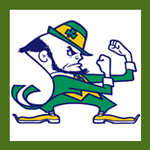 The Notre Dame Fighting Irish: By far the most recognizable name in this tournament, Notre Dame itself doesn’t know the definitive origin of its mascot. While two different stories attribute the name “Fighting Irish” to nasty remarks made by the opposing sides during football games, the more widely accepted origin traces the “Fighting Irish” back to press coverage of Notre Dame athletics in the 1920s. Additionally, the mascot position was originally held by a series of Irish Terriers, a tradition that began in 1930 and lasted until the Fighting Irish Leprechaun took over as the primary mascot in 1965.
The Notre Dame Fighting Irish: By far the most recognizable name in this tournament, Notre Dame itself doesn’t know the definitive origin of its mascot. While two different stories attribute the name “Fighting Irish” to nasty remarks made by the opposing sides during football games, the more widely accepted origin traces the “Fighting Irish” back to press coverage of Notre Dame athletics in the 1920s. Additionally, the mascot position was originally held by a series of Irish Terriers, a tradition that began in 1930 and lasted until the Fighting Irish Leprechaun took over as the primary mascot in 1965.
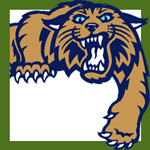 The Villanova Wildcat: Villanova’s Wildcats have been around since 1926, when a university-wide contest selected the mascot. Since then, the Wildcats have represented Villanova in a variety of sports (the teams at various points bearing alternate titles like “Trackcats,” “Watercats,” and “Polocats.”) From 1930 to 1950, Villanova was in possession of a live wildcat that would be brought out for football games, a practice that was (thankfully!) abolished because of the feisty behavior of the animals. Since 1950, the mascot “Will D. Cat” has graced the sidelines at Villanova athletic events.
The Villanova Wildcat: Villanova’s Wildcats have been around since 1926, when a university-wide contest selected the mascot. Since then, the Wildcats have represented Villanova in a variety of sports (the teams at various points bearing alternate titles like “Trackcats,” “Watercats,” and “Polocats.”) From 1930 to 1950, Villanova was in possession of a live wildcat that would be brought out for football games, a practice that was (thankfully!) abolished because of the feisty behavior of the animals. Since 1950, the mascot “Will D. Cat” has graced the sidelines at Villanova athletic events.
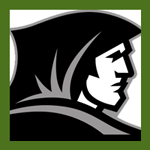 The Providence Friar: Originally the Friars’ mascot wasn’t even a friar — he was a Dalmatian by the name of “Friar of What-Ho” purchased by the Friars Club and brought to games beginning in 1935. This was in keeping with the Dominicans’ nickname as “watchdogs of the Lord” as Providence is the only college in North America run by the Dominican order. After the 1963 death of the fourth Dalmatian Friar, Providence decided on a more human representation. Since then, they’ve had an actual Friar mascot, with a brief retreat between 1993-2001 when a Dalmatian once again served in honor of the school’s 75th anniversary.
The Providence Friar: Originally the Friars’ mascot wasn’t even a friar — he was a Dalmatian by the name of “Friar of What-Ho” purchased by the Friars Club and brought to games beginning in 1935. This was in keeping with the Dominicans’ nickname as “watchdogs of the Lord” as Providence is the only college in North America run by the Dominican order. After the 1963 death of the fourth Dalmatian Friar, Providence decided on a more human representation. Since then, they’ve had an actual Friar mascot, with a brief retreat between 1993-2001 when a Dalmatian once again served in honor of the school’s 75th anniversary.
 The Loyola Chicago Rambler: Previously known as the “Grandees,” Loyola University Chicago changed their mascot to the Ramblers in 1926 because of the many miles the football team logged traveling that year. Lacking a personified embodiment of a mascot, “Bo Rambler,” a hobo with a big giant head, was introduced in the 1980s. Bo was discontinued in 1990 because a “hobo wasn’t up to the standards of a Jesuit University” and replaced with a wolf named “Lu” — an acronym for Loyola University — inspired by St. Ignatius’ coat of arms. Though “LU Wolf” is still around, the school remains known as the Ramblers.
The Loyola Chicago Rambler: Previously known as the “Grandees,” Loyola University Chicago changed their mascot to the Ramblers in 1926 because of the many miles the football team logged traveling that year. Lacking a personified embodiment of a mascot, “Bo Rambler,” a hobo with a big giant head, was introduced in the 1980s. Bo was discontinued in 1990 because a “hobo wasn’t up to the standards of a Jesuit University” and replaced with a wolf named “Lu” — an acronym for Loyola University — inspired by St. Ignatius’ coat of arms. Though “LU Wolf” is still around, the school remains known as the Ramblers.
 The Loyola Maryland Greyhound: The Greyhound, known to be a fierce and fast dog, is the mascot of Loyola University Maryland. The mascot has been portrayed throughout the years by both live greyhounds (the last one, Nicholas III, retired in 2011) and a costumed-mascot, Iggy. The Greyhounds are best known for their men and women’s winning lacrosse teams, honoring their mascot by being both fierce and fast.
The Loyola Maryland Greyhound: The Greyhound, known to be a fierce and fast dog, is the mascot of Loyola University Maryland. The mascot has been portrayed throughout the years by both live greyhounds (the last one, Nicholas III, retired in 2011) and a costumed-mascot, Iggy. The Greyhounds are best known for their men and women’s winning lacrosse teams, honoring their mascot by being both fierce and fast.
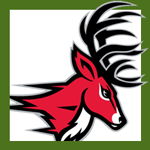 The Fairfield Stag: Originally known as the “Men in Red,” Fairfield adopted the symbol of the Stag as its mascot in 1948 in a vote by the school’s board of trustees. Designed to represent the school’s close ties with nature as well as its connection with the Diocese of Hartford, Connecticut, the spirited and agile Stag is a far better emblem of the school’s athletics than the runner-up, the Chanticleer. Doe-eyed and adorable, “Lucas,” as the Stag is nicknamed, enjoys being the life of the party.
The Fairfield Stag: Originally known as the “Men in Red,” Fairfield adopted the symbol of the Stag as its mascot in 1948 in a vote by the school’s board of trustees. Designed to represent the school’s close ties with nature as well as its connection with the Diocese of Hartford, Connecticut, the spirited and agile Stag is a far better emblem of the school’s athletics than the runner-up, the Chanticleer. Doe-eyed and adorable, “Lucas,” as the Stag is nicknamed, enjoys being the life of the party.
 The Le Moyne Dolphin: An ancient symbol of the first Christians was a fish. So, even though its a mammal, the symbol of Le Moyne College, a small Jesuit school in Syracuse, New York, is a dolphin. Considered friendly toward humans, known for its grace and swiftness, and representing both love and tenderness, the dolphin also symbolizes a desire for knowledge. The Le Moyne costumed mascot Dolphin, around since the 1970s and named Best Unknown Mascot by a local newspaper, spends its time supporting its school and most likely partying at, though not officially linked with, Dolphy Day.
The Le Moyne Dolphin: An ancient symbol of the first Christians was a fish. So, even though its a mammal, the symbol of Le Moyne College, a small Jesuit school in Syracuse, New York, is a dolphin. Considered friendly toward humans, known for its grace and swiftness, and representing both love and tenderness, the dolphin also symbolizes a desire for knowledge. The Le Moyne costumed mascot Dolphin, around since the 1970s and named Best Unknown Mascot by a local newspaper, spends its time supporting its school and most likely partying at, though not officially linked with, Dolphy Day.
 The Siena St. Bernard: Siena College was founded in 1937 by the Franciscans and named after St. Bernardino of Siena. The school’s nickname is “The Saints,” however their mascot is a St. Bernard named “Bernie,” even though the actual animal is named after a different St. Bernard. “Bernie” has been around since 1989 with a few different looks along the way. And even though there seems to be a movement to replace the costumed mascot with a live one, “Bernie” continues to drool all over the competition and may find itself drooling all over its fellow Catholic Mascotology competitors.
The Siena St. Bernard: Siena College was founded in 1937 by the Franciscans and named after St. Bernardino of Siena. The school’s nickname is “The Saints,” however their mascot is a St. Bernard named “Bernie,” even though the actual animal is named after a different St. Bernard. “Bernie” has been around since 1989 with a few different looks along the way. And even though there seems to be a movement to replace the costumed mascot with a live one, “Bernie” continues to drool all over the competition and may find itself drooling all over its fellow Catholic Mascotology competitors.
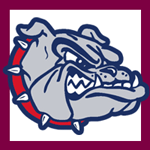 The Gonzaga Bulldog: In the 1910s, Gonzaga was known as “The Fighting Irish” (watch out, Notre Dame)! It wasn’t until 1921 when a reporter compared them to tenacious bulldogs that the canine foundation was laid. For roughly 60 years, numerous live bulldogs were used to scare away the competition until in 1980 a student donning a cape and calling himself “Captain Zag” took over the reigns. In 1985, the Bulldog was reintroduced as a costumed mascot who, better known as “Spike,” constantly competes for fame with the unofficial other name for Gonzaga’s students, teams, and fans who are frequently referred to as “Zags.”
The Gonzaga Bulldog: In the 1910s, Gonzaga was known as “The Fighting Irish” (watch out, Notre Dame)! It wasn’t until 1921 when a reporter compared them to tenacious bulldogs that the canine foundation was laid. For roughly 60 years, numerous live bulldogs were used to scare away the competition until in 1980 a student donning a cape and calling himself “Captain Zag” took over the reigns. In 1985, the Bulldog was reintroduced as a costumed mascot who, better known as “Spike,” constantly competes for fame with the unofficial other name for Gonzaga’s students, teams, and fans who are frequently referred to as “Zags.”
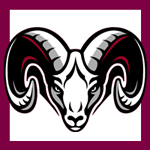 The Fordham Ram: Born out of a vulgar 1893 cheer (“One-damn, two-damn, three-damn, Fordham!”), “Ramses the Ram” has a history that is dramatic, sordid, and at times, quite disturbing. The Jesuit establishment soon changed the utterance to the more tolerable “ram,” which became the official mascot in 1905. Even though the Ram appeared in an illustrated format in 1918, its true heyday began in 1925 when the first living ram, Ramses I, was “borrowed” from a nearby farm by a group of Fordham students. For 44 years, 21 living rams took the name Ramses, but not without some unexpected occurrences along the way. In 1934, one of the Ramses was brutally murdered by SMU’s mascot, Peruna I, a black Shetland pony, who killed poor Ramses instantly with a swift kick to the head. Costumed mascots began portraying the Ram as early as 1963, and in 2009 one of them was punched in the face in the school cafeteria by a fellow student who then cowardly ran away. The Ram proceeded to chase down the student, bringing justice to the student’s face via a knuckle sandwich. Most recently, a Ram named “Buster” returned as the 22nd living incarnation of the mascot, if only for a day, to don Ramses attire and lift school spirits once again.
The Fordham Ram: Born out of a vulgar 1893 cheer (“One-damn, two-damn, three-damn, Fordham!”), “Ramses the Ram” has a history that is dramatic, sordid, and at times, quite disturbing. The Jesuit establishment soon changed the utterance to the more tolerable “ram,” which became the official mascot in 1905. Even though the Ram appeared in an illustrated format in 1918, its true heyday began in 1925 when the first living ram, Ramses I, was “borrowed” from a nearby farm by a group of Fordham students. For 44 years, 21 living rams took the name Ramses, but not without some unexpected occurrences along the way. In 1934, one of the Ramses was brutally murdered by SMU’s mascot, Peruna I, a black Shetland pony, who killed poor Ramses instantly with a swift kick to the head. Costumed mascots began portraying the Ram as early as 1963, and in 2009 one of them was punched in the face in the school cafeteria by a fellow student who then cowardly ran away. The Ram proceeded to chase down the student, bringing justice to the student’s face via a knuckle sandwich. Most recently, a Ram named “Buster” returned as the 22nd living incarnation of the mascot, if only for a day, to don Ramses attire and lift school spirits once again.
 The Catholic University Cardinal: No, not a Catholic Cardinal, but rather the regular bird kind of cardinal, Catholic University’s mascot hasn’t always been the icon of this school’s spirit. In 1907, the colors red and black were chosen as the school’s colors and for a while they went by that. In 1925, the school newspaper needed a name and the Cardinal was chosen, representing the clerical, red hat-wearing kind of cardinal. Then, when an actual mascot was finally needed, they eventually just went with the bird. According to at least one online photo, it appears the Cardinal enjoys picking fights with other mascots.
The Catholic University Cardinal: No, not a Catholic Cardinal, but rather the regular bird kind of cardinal, Catholic University’s mascot hasn’t always been the icon of this school’s spirit. In 1907, the colors red and black were chosen as the school’s colors and for a while they went by that. In 1925, the school newspaper needed a name and the Cardinal was chosen, representing the clerical, red hat-wearing kind of cardinal. Then, when an actual mascot was finally needed, they eventually just went with the bird. According to at least one online photo, it appears the Cardinal enjoys picking fights with other mascots.
 The Marist Red Fox: The Red Foxes get their name from the intelligent and cunning animal native to the Hudson Valley where the school is located. The current Marist Red Fox, officially known as “Shooter,” was born in 1979 as the brainchild of a “local energetic high school sophomore.” Aside from supporting the students and athletes of Marist, “Shooter” is known to enjoy Mookies (Marist Red Fox Cookies), the comic antics of another Redd Foxx, and apparently getting into down and dirty dance contests with fellow Catholic Mascotology competitor, the Georgetown Bulldog.
The Marist Red Fox: The Red Foxes get their name from the intelligent and cunning animal native to the Hudson Valley where the school is located. The current Marist Red Fox, officially known as “Shooter,” was born in 1979 as the brainchild of a “local energetic high school sophomore.” Aside from supporting the students and athletes of Marist, “Shooter” is known to enjoy Mookies (Marist Red Fox Cookies), the comic antics of another Redd Foxx, and apparently getting into down and dirty dance contests with fellow Catholic Mascotology competitor, the Georgetown Bulldog.
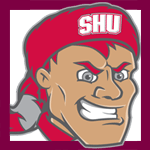 The Sacred Heart Pioneer: Since 2007, Sacred Heart University has had something big, red, and fuzzy in charge of its school spirit — “Big Red” the Pioneer. Dressed in a full leather, suede pioneer outfit, a crazed smile stretched across his face, and a shock of red hair topped with a coonskin cap, “Big Red” the Pioneer looks like a mix between a raving Daniel Boone and Ron Weasley. He replaced the previous Pioneer, “Bucky” (1990-2002), who “the students weren’t really connecting with” anymore. Will “Big Red’s” destiny manifest him to the top of Catholic Mascotology this year?
The Sacred Heart Pioneer: Since 2007, Sacred Heart University has had something big, red, and fuzzy in charge of its school spirit — “Big Red” the Pioneer. Dressed in a full leather, suede pioneer outfit, a crazed smile stretched across his face, and a shock of red hair topped with a coonskin cap, “Big Red” the Pioneer looks like a mix between a raving Daniel Boone and Ron Weasley. He replaced the previous Pioneer, “Bucky” (1990-2002), who “the students weren’t really connecting with” anymore. Will “Big Red’s” destiny manifest him to the top of Catholic Mascotology this year?
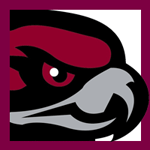 The St. Joseph’s Hawk: The St. Joseph’s Hawk has been called the Atlantic 10 Conference’s “Best Mascot.” The Hawk has been the mascot at St. Joe’s since 1929, but first flapped its wings in 1956 and hasn’t stopped since. The Hawk represents the school’s motto, “The Hawk Will Never Die,” by flapping its wings repeatedly through every basketball game, not even stopping during halftime (or the national anthem). On average the Hawk flaps its wings 3500 times during a game. This is no easy feat, which is why the one student chosen per year to portray the mascot receives a full scholarship.
The St. Joseph’s Hawk: The St. Joseph’s Hawk has been called the Atlantic 10 Conference’s “Best Mascot.” The Hawk has been the mascot at St. Joe’s since 1929, but first flapped its wings in 1956 and hasn’t stopped since. The Hawk represents the school’s motto, “The Hawk Will Never Die,” by flapping its wings repeatedly through every basketball game, not even stopping during halftime (or the national anthem). On average the Hawk flaps its wings 3500 times during a game. This is no easy feat, which is why the one student chosen per year to portray the mascot receives a full scholarship.
 The St. John’s Red Storm: St. John’s was once known as the “Redmen,” a term interpreted as an offensive slur to Native Americans, but originally referring to the red uniforms worn by St. John’s athletes (though, sadly, in the 1960s the school did indeed use a mascot dressed in a Native American costume). In 1994, they officially became the Red Storm. Later, needing a more anthropomorphic embodiment of school spirit, the school created a red thunderbird mascot named “Johnny,” a reference to early 20th century St. John’s athletes nicknamed “Johnnies.” Click here for a short history of “Johnny Thunderbird.”
The St. John’s Red Storm: St. John’s was once known as the “Redmen,” a term interpreted as an offensive slur to Native Americans, but originally referring to the red uniforms worn by St. John’s athletes (though, sadly, in the 1960s the school did indeed use a mascot dressed in a Native American costume). In 1994, they officially became the Red Storm. Later, needing a more anthropomorphic embodiment of school spirit, the school created a red thunderbird mascot named “Johnny,” a reference to early 20th century St. John’s athletes nicknamed “Johnnies.” Click here for a short history of “Johnny Thunderbird.”
 The Duquesne Duke: Representing the 1%, the Duke is one of the most distinguished and privileged mascots competing in Catholic Mascotology. The nickname Duke dates back to 1911 when the Pittsburgh Catholic College of the Holy Ghost changed its name to Duquesne in honor of the Marquis Du Quesne, the French Canadian governor who first brought Catholic observances to the Pittsburgh area. The term Duke was more recognizable than Marquis and so, dressed in a top hat, tails, and a regal sash, he’s been the mascot ever since.
The Duquesne Duke: Representing the 1%, the Duke is one of the most distinguished and privileged mascots competing in Catholic Mascotology. The nickname Duke dates back to 1911 when the Pittsburgh Catholic College of the Holy Ghost changed its name to Duquesne in honor of the Marquis Du Quesne, the French Canadian governor who first brought Catholic observances to the Pittsburgh area. The term Duke was more recognizable than Marquis and so, dressed in a top hat, tails, and a regal sash, he’s been the mascot ever since.
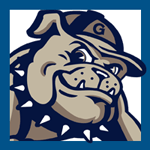 The Georgetown Bulldog: Ranking 8th among the American Kennel Club’s top 125 dogs in pop culture, “Jack” the Bulldog is an actual bulldog that lives at the country’s oldest Jesuit university. “Jack” has been the name of at least five dogs since 1962 when the first puppy was brought to campus. His name was originally supposed to be “Hoya” after the “Hoya Saxa” school cheer and previous canine mascots, but the dog refused to answer to anything else, so we ended up with “Jack,” arguably the most famous of the 39 bulldogs used as American university mascots, and unarguably one of the top contenders for our Best Mascot title.
The Georgetown Bulldog: Ranking 8th among the American Kennel Club’s top 125 dogs in pop culture, “Jack” the Bulldog is an actual bulldog that lives at the country’s oldest Jesuit university. “Jack” has been the name of at least five dogs since 1962 when the first puppy was brought to campus. His name was originally supposed to be “Hoya” after the “Hoya Saxa” school cheer and previous canine mascots, but the dog refused to answer to anything else, so we ended up with “Jack,” arguably the most famous of the 39 bulldogs used as American university mascots, and unarguably one of the top contenders for our Best Mascot title.
 The DePaul Blue Demon: How does the largest Catholic university in the United States end up with a demon as its mascot? The story is quite intriguing. In 1907, the school changed its name from St. Vincent’s University to DePaul, simultaneously changing the sports teams’ uniforms to feature a large letter “D” on the front. When opposing teams began to refer to DePaul’s players as “D-men,” the nickname quickly changed to “demon,” and eventually was adopted by the university. The mascot itself first appeared in 1968, and is often referred to as “DIBS” (for “Demon in a Blue Suit”).
The DePaul Blue Demon: How does the largest Catholic university in the United States end up with a demon as its mascot? The story is quite intriguing. In 1907, the school changed its name from St. Vincent’s University to DePaul, simultaneously changing the sports teams’ uniforms to feature a large letter “D” on the front. When opposing teams began to refer to DePaul’s players as “D-men,” the nickname quickly changed to “demon,” and eventually was adopted by the university. The mascot itself first appeared in 1968, and is often referred to as “DIBS” (for “Demon in a Blue Suit”).
 The Xavier Blue Blob: Despite sharing official mascot status for Ohio’s Xavier University with D’Artagnan the Musketeer, the Blue Blob stands alone as the third seed in his region. Though a seemingly innocent, well, blob, Xavier’s mascot has some edge — he was accidentally tackled by Xavier basketball fan Theo Nelson in 2002, which skyrocketed the Blob to fame, landing him appearances in commercials for ESPN and Skyline Chili and even a featured interview in Playboy. (Don’t ask.)
The Xavier Blue Blob: Despite sharing official mascot status for Ohio’s Xavier University with D’Artagnan the Musketeer, the Blue Blob stands alone as the third seed in his region. Though a seemingly innocent, well, blob, Xavier’s mascot has some edge — he was accidentally tackled by Xavier basketball fan Theo Nelson in 2002, which skyrocketed the Blob to fame, landing him appearances in commercials for ESPN and Skyline Chili and even a featured interview in Playboy. (Don’t ask.)
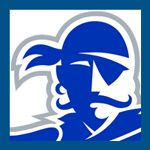 The Seton Hall Pirate: Representing the oldest diocesan university in the United States, as well as the oldest and largest Catholic university in New Jersey, Seton Hall athletics have been around since 1903 when the school established its first basketball team. However, the Pirate name itself didn’t arise until 1931, when a baseball upset win over another Catholic Mascotology team, the Holy Cross Crusaders, spurred a local sportscaster to call the team “a gang of pirates!” The name has done Seton Hall well (certainly better than its predecessors, the “Villagers” and the “Alerts”), so it seems that it’s a pirate’s life for them.
The Seton Hall Pirate: Representing the oldest diocesan university in the United States, as well as the oldest and largest Catholic university in New Jersey, Seton Hall athletics have been around since 1903 when the school established its first basketball team. However, the Pirate name itself didn’t arise until 1931, when a baseball upset win over another Catholic Mascotology team, the Holy Cross Crusaders, spurred a local sportscaster to call the team “a gang of pirates!” The name has done Seton Hall well (certainly better than its predecessors, the “Villagers” and the “Alerts”), so it seems that it’s a pirate’s life for them.
 The Holy Cross Crusader: A founding member of New England’s Patriot League, Holy Cross holds an important place in college athletics, and its Crusaders form the proud face of that position. The name came about officially in 1925 when, following an article that referred to the Holy Cross baseball team as “crusaders,” the school paper took a vote between “Crusaders” and the two other mascot names in use, “Chiefs” and “Sagamores.” “Crusaders” won by a landslide, toppling the other two names by more than 100 votes. Thank goodness for that!
The Holy Cross Crusader: A founding member of New England’s Patriot League, Holy Cross holds an important place in college athletics, and its Crusaders form the proud face of that position. The name came about officially in 1925 when, following an article that referred to the Holy Cross baseball team as “crusaders,” the school paper took a vote between “Crusaders” and the two other mascot names in use, “Chiefs” and “Sagamores.” “Crusaders” won by a landslide, toppling the other two names by more than 100 votes. Thank goodness for that!
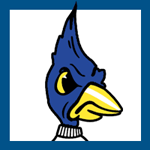 The Creighton Bluejay: Boasting a wide array of athletic teams, the banner of the Creighton Bluejays looms large over NCAA sports. Before 1924, Creighton’s teams were called the “Hilltoppers,” but since that was shared with at least six other schools, they held a vote to find a more individual title. Now they hold a unique place as the only exclusive Division I program to use the blue jay as a mascot. But will their prized “Billy Bluejay” be enough to stand out among the competition of Catholic Mascotology?
The Creighton Bluejay: Boasting a wide array of athletic teams, the banner of the Creighton Bluejays looms large over NCAA sports. Before 1924, Creighton’s teams were called the “Hilltoppers,” but since that was shared with at least six other schools, they held a vote to find a more individual title. Now they hold a unique place as the only exclusive Division I program to use the blue jay as a mascot. But will their prized “Billy Bluejay” be enough to stand out among the competition of Catholic Mascotology?
 The Spring Hill Badger: If Spring Hill’s mascot is anywhere near as, well, pervasive as this popular video, then they could come out on top of Catholic Mascotology (granted, if they’re even half as annoying, they’ve got a good chance of getting kicked out in the first round). Recently accepted by the NCAA to begin the process of joining Division II, Spring Hill has plenty to be proud of in its Badgers. The school’s sports have a rich history dating back to 1889, the year of Spring Hill baseball’s first intercollegiate play.
The Spring Hill Badger: If Spring Hill’s mascot is anywhere near as, well, pervasive as this popular video, then they could come out on top of Catholic Mascotology (granted, if they’re even half as annoying, they’ve got a good chance of getting kicked out in the first round). Recently accepted by the NCAA to begin the process of joining Division II, Spring Hill has plenty to be proud of in its Badgers. The school’s sports have a rich history dating back to 1889, the year of Spring Hill baseball’s first intercollegiate play.
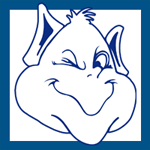 The St. Louis Billiken: First off, what is a billiken? Essentially, it’s best described as a cross between a pixie and an elf. According to an article from St. Louis University publication “Universitas,” the billiken is “The god of things as they ought to be,” a little imp who brought its owner luck — good luck if bought, better luck if received as a gift, and the best luck if stolen! Though seeded last in its region, maybe the Billiken can bring St. Louis some luck in this tournament and pull out a surprise victory. (Who knows? It did previously claim the #1 spot as the lamest college mascot.)
The St. Louis Billiken: First off, what is a billiken? Essentially, it’s best described as a cross between a pixie and an elf. According to an article from St. Louis University publication “Universitas,” the billiken is “The god of things as they ought to be,” a little imp who brought its owner luck — good luck if bought, better luck if received as a gift, and the best luck if stolen! Though seeded last in its region, maybe the Billiken can bring St. Louis some luck in this tournament and pull out a surprise victory. (Who knows? It did previously claim the #1 spot as the lamest college mascot.)
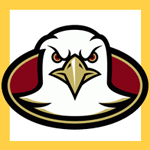 The Boston College Eagle: Who knew the impetus behind “Baldwin,” the American bald eagle that serves as the official mascot for Boston College, was an old man writing an angry letter? Upset at reading a local Boston newspaper cartoon in 1920 featuring his alma mater as an innocently drawn cat, loyal alum Fr. Edward J. McLaughlin angrily wrote to the college newspaper insisting the school draft an appropriate mascot. “And why not the Eagle, symbolic of majesty, power, and freedom?” Why not, indeed? The idea of the Eagle stuck and has since been incarnated in several different manifestations including a few live eagles (all who met with untimely ends), a stuffed eagle, a gilded bronze sculpture, and a costumed mascot. Unfortunately, the most recent appearance of a once-again live eagle “Baldwin” has troubled the good people of PETA. Despite this, could the B.C. Eagle end up winning Catholic Mascotology — why not?
The Boston College Eagle: Who knew the impetus behind “Baldwin,” the American bald eagle that serves as the official mascot for Boston College, was an old man writing an angry letter? Upset at reading a local Boston newspaper cartoon in 1920 featuring his alma mater as an innocently drawn cat, loyal alum Fr. Edward J. McLaughlin angrily wrote to the college newspaper insisting the school draft an appropriate mascot. “And why not the Eagle, symbolic of majesty, power, and freedom?” Why not, indeed? The idea of the Eagle stuck and has since been incarnated in several different manifestations including a few live eagles (all who met with untimely ends), a stuffed eagle, a gilded bronze sculpture, and a costumed mascot. Unfortunately, the most recent appearance of a once-again live eagle “Baldwin” has troubled the good people of PETA. Despite this, could the B.C. Eagle end up winning Catholic Mascotology — why not?
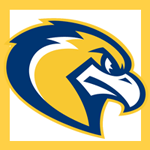 The Marquette Golden Eagle: One of two and a half eagles featured in Catholic Mascotology, the Marquette Golden Eagle has only been around since 1994 when the school decided to re-imagine its mascot into a less controversial entity than the previously named “Warrior.” The Golden Eagle, proud to be part of the first co-ed Catholic university in the world (beginning in 1909 when women were finally allowed to enroll) has spent his brief 19 years supporting his teams, fighting off another would-be-mascot usurper, and apparently refusing interviews. The question remains, does he have what it takes to soar to the top of this bracket?
The Marquette Golden Eagle: One of two and a half eagles featured in Catholic Mascotology, the Marquette Golden Eagle has only been around since 1994 when the school decided to re-imagine its mascot into a less controversial entity than the previously named “Warrior.” The Golden Eagle, proud to be part of the first co-ed Catholic university in the world (beginning in 1909 when women were finally allowed to enroll) has spent his brief 19 years supporting his teams, fighting off another would-be-mascot usurper, and apparently refusing interviews. The question remains, does he have what it takes to soar to the top of this bracket?
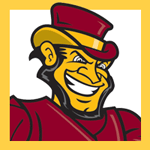 The Iona Gael: The Iona Gael makes a great would-be contender for a possible face-off with the Notre Dame Irish Man, as the Iona sports website defines a Gael as “anyone of Irish-Gaelic ancestry.” They go on to say that their Gael is a spunky character who is consistent with the school’s motto of “fight the good fight.” He certainly is, what with that disconcerting smile and awfully big wooden club he carries around. Don’t forget to show your support of the Iona Gael’s chances in Catholic Mascotology by purchasing this giant inflatable Gael (sans wooden club).
The Iona Gael: The Iona Gael makes a great would-be contender for a possible face-off with the Notre Dame Irish Man, as the Iona sports website defines a Gael as “anyone of Irish-Gaelic ancestry.” They go on to say that their Gael is a spunky character who is consistent with the school’s motto of “fight the good fight.” He certainly is, what with that disconcerting smile and awfully big wooden club he carries around. Don’t forget to show your support of the Iona Gael’s chances in Catholic Mascotology by purchasing this giant inflatable Gael (sans wooden club).
 The Canisius Golden Griffin: Half lion, half eagle, the mighty Griffin allows Canisius College two mascots in one. Though, one has to wonder about the theological implications of a Catholic school using an ancient Greek mythological figure as its mascot? However, further research actually proves it’s quite logical: in medieval times the Griffin was an emblem of the Church’s view of marriage since the animals were said to mate for life and stay faithful to their beloved even after the other had died. Furthermore, being a beast of both the land and the air, it was seen in Christendom as a symbol of Jesus — both human and divine.
The Canisius Golden Griffin: Half lion, half eagle, the mighty Griffin allows Canisius College two mascots in one. Though, one has to wonder about the theological implications of a Catholic school using an ancient Greek mythological figure as its mascot? However, further research actually proves it’s quite logical: in medieval times the Griffin was an emblem of the Church’s view of marriage since the animals were said to mate for life and stay faithful to their beloved even after the other had died. Furthermore, being a beast of both the land and the air, it was seen in Christendom as a symbol of Jesus — both human and divine.
 The St. Bonaventure Bona Wolf: Legend says that back in the day, St. Francis actually tamed a wolf in Italy. Thus, St. Bonaventure, a school closely affiliated with the Franciscans, conceived the wolf as its third mascot in 1998, seeking qualities that were “aggressive, yet friendly.” At the spry young age of 15, “Bona” Wolf is a hugely popular mascot for its school, much more than the previous controversial “Brown Indian” (1927-1992) and the disastrously received “Bona Fanatic” (1996-1998) who was so disliked that it was actually assaulted numerous times by St. Bonaventure fans.
The St. Bonaventure Bona Wolf: Legend says that back in the day, St. Francis actually tamed a wolf in Italy. Thus, St. Bonaventure, a school closely affiliated with the Franciscans, conceived the wolf as its third mascot in 1998, seeking qualities that were “aggressive, yet friendly.” At the spry young age of 15, “Bona” Wolf is a hugely popular mascot for its school, much more than the previous controversial “Brown Indian” (1927-1992) and the disastrously received “Bona Fanatic” (1996-1998) who was so disliked that it was actually assaulted numerous times by St. Bonaventure fans.
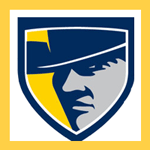 The Regis Ranger: Who exactly is the Regis Ranger? That’s a good question and one that basic Internet research doesn’t turn up a lot of answers for. According to one top 10 list found online, “We are the Regis Rangers, but our mascot’s uniform is a wolf.” So who or what is it: man or wolf? Or possibly, Wolfman?
The Regis Ranger: Who exactly is the Regis Ranger? That’s a good question and one that basic Internet research doesn’t turn up a lot of answers for. According to one top 10 list found online, “We are the Regis Rangers, but our mascot’s uniform is a wolf.” So who or what is it: man or wolf? Or possibly, Wolfman?
 The University of Dayton Flyer: “Rudy” Flyer is not only a card-carrying member of the University of Dayton but also its mascot. Dressed as a “barnstorming pilot who wears 1930s-40s-era goggles and a leather pilot’s helmet,” he is a Flyer as well as a reference and homage to the Wright brothers, who are credited with inventing and building the world’s first successful airplane back in 1903.
The University of Dayton Flyer: “Rudy” Flyer is not only a card-carrying member of the University of Dayton but also its mascot. Dressed as a “barnstorming pilot who wears 1930s-40s-era goggles and a leather pilot’s helmet,” he is a Flyer as well as a reference and homage to the Wright brothers, who are credited with inventing and building the world’s first successful airplane back in 1903.
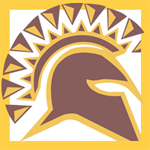 The St. Thomas Aquinas Spartan: One of 12 schools worldwide to use the Spartan as its mascot, St. Thomas Aquinas is obviously going for the frugal and austere nature of the Spartan spirit, in that there is little to no information about its mascot listed on the web. Oh well, go Sparta!
The St. Thomas Aquinas Spartan: One of 12 schools worldwide to use the Spartan as its mascot, St. Thomas Aquinas is obviously going for the frugal and austere nature of the Spartan spirit, in that there is little to no information about its mascot listed on the web. Oh well, go Sparta!
